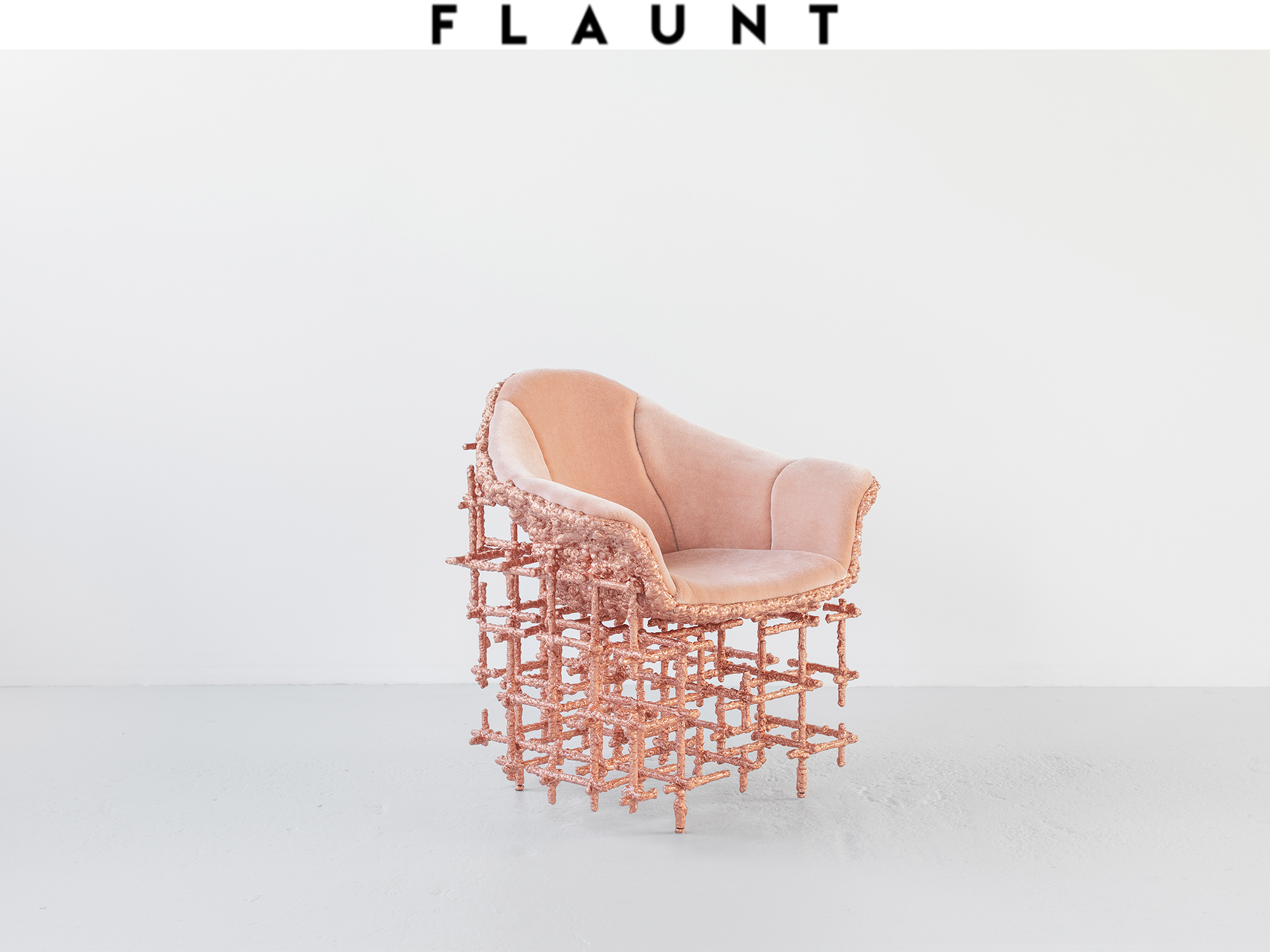Whoever said that furniture can only be practical has not met Chris Schanck. The Detroit-based artist and furniture designer constantly toes the line between art and furniture, sculpture and chair. Schanck believes that disciplinary boundaries are to be pushed and genres to be blended, especially when it comes to his own designs.
Schanck will present new sculptural works with Friedman Benda at this year’s Salon Art + Design from November 11 to 15. His distinctive bright colors, odd shapes, and out-of-the-box use of materials have brought attention to Schanck, who has mastered the practice of bringing out unconventional beauty from the strangest places. For the 10th anniversary of the fair, Schanck will showcase a new cast mirror in anticipation of his retrospective at the Museum of Arts and Design in New York this upcoming February.
Flaunt had the chance to speak with Schanck and talk about all things Friedman Benda, navigating between art and design, and even his favorite piece of work.
How does it feel to be a part of Friedman Benda’s exhibition for the 10th anniversary of Salon Art + Design?
I feel grateful to be in the right place at the right time. This is an occasion to celebrate the collective efforts of all those who have labored with love to bring this fair to us over the past ten years. A time to recognize all the galleries that have committed to fill the Salon’s pavilion with their best offerings over the past decade. I believe the Salon goes beyond transactional relationships. It’s an annual cultural event that brings our odd little world together. A chance to connect with colleagues IRL we’ve only known through digital media. Most of all, the fair is now a part of the city’s DNA. It opens its doors to the curious newcomer and expert alike to experience the spirit of design today.
Who else’s work are you excited to see at the anniversary celebration?
I’m in love with Shari Mendelson’s work. I believe their work is an enchanting bridge between our collective ancestral past and our littered present day from which Mendelson gathers their material. The work is imperfectly beautiful, reminiscent of ancient Greek artifacts, handmade, and finished in soft industrial palettes of blues, greens, and transparent milky whites. All which seems charming enough on first appearances but approach with caution, this work has sharp edges. It reminds us of where we come from and prompts us to consider where we’re headed or may have already arrived. What more can one ask of a single artist? They are of this moment and they have my admiration.
How do you navigate between being an artist & a furniture designer?
I navigate between the two disciplines by following and listening to my own curiosity and intuition. From my earliest memories, I’ve always imagined I would become an artist. I could not know what form that would take over my 45 plus years of life. My foundation was built on the history and basic principles of the fine arts and design. Yet for some reason—perhaps some good ones—we find ourselves trying to distinguish and separate art from design. In a lay world, we could say design is a rational and utilitarian practice while the fine arts is an intuitive pursuit of beauty and meaningfulness. Or plainly put one is meant to be handled and used while the other is meant to be gazed and meditated upon from a distance. Consider that within the fine arts own historical critical cannon it was at one time best believed to keep the mediums wholly separated, out of fear of diluting them. But who now would deny the value and power of a fine arts practice mixed and multi-layered in diverse mediums?
A competent creative person can hold two ideas in their mind at the same time. Creative borders and boundaries are meant to be stress tested so that new forms and genres can emerge to more accurately describe our present day. Like the great songwriter said ‘The Times They Are A-Changin.’
The chair you designed doubles as a sculpture and a form of seating—do you think of your designs first as practical or as being visually appealing?
A chair is first experienced with sight and then explored with the body. The combined experience is the power of design.
You have an upcoming retrospective at the Museum of Arts and Design in NY that opens in February of next year. What can we look forward to seeing from you then?
Hopefully growth. It’s an homage to the mentors of my youth, my present-day community, and a meditation on our fragile present day.
Finally, do you have a favorite piece that you’ve worked on?
The Mum chandelier—the power of art is whatever you will it to be. In this case, it was to make a collaborative piece with my mum. To heal and bond a relationship and mentorship separated years ago. In one hundred years no one is likely to remember my name, but my time here and now with my family, friends, and dreams of my work is the best way I know how to experience this world- my work is my faith.










